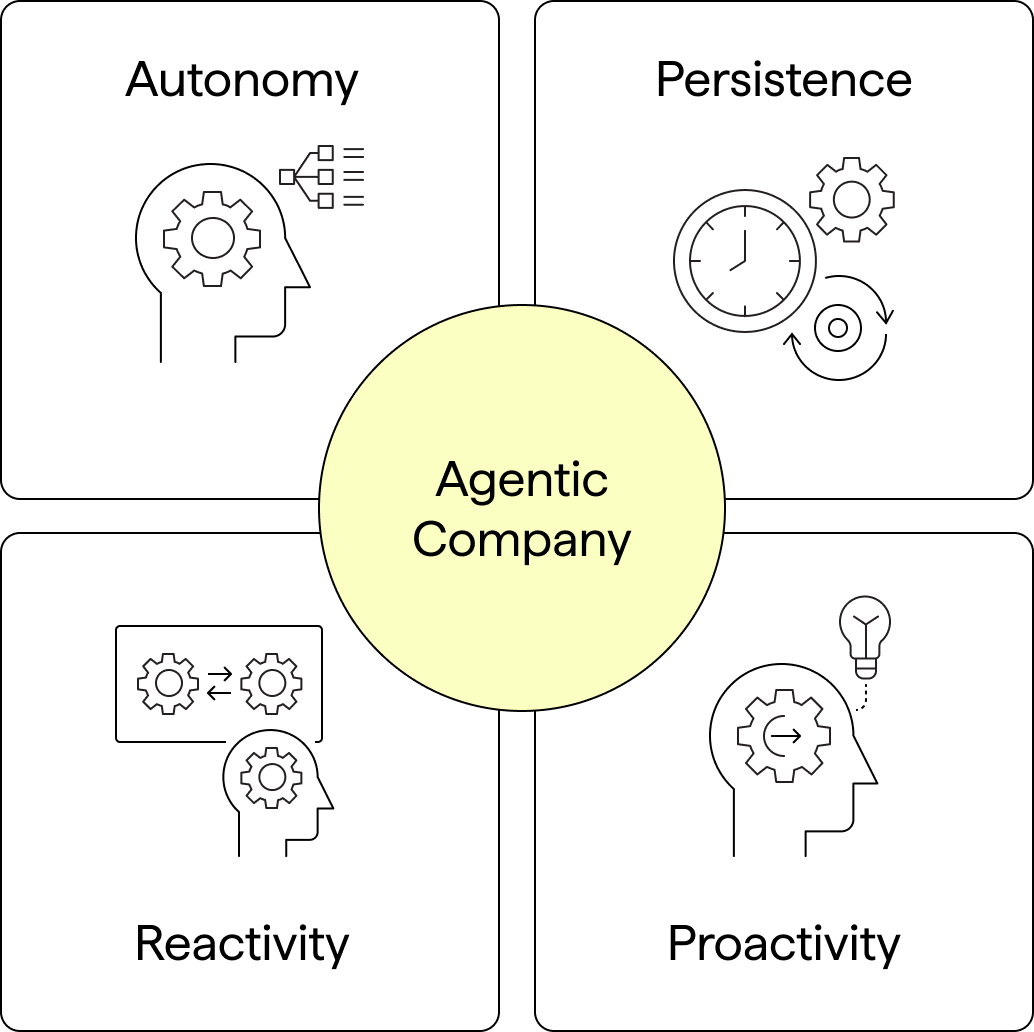4 Components That Make AI Truly Agentic
The four foundations of agentic AI system, that gives it the ability to set objectives, break down complexity, notice what’s missing, ask for clarification, learn, and adapt.

In the rapidly evolving landscape of AI, many companies claim to be building AI agents.
While this race towards agentic AI systems across sectors is in full force, it’s important to remember the 4 key elements that companies must have for their technologies to be considered truly agentic: Autonomy, Persistence, Reactivity, and Proactivity.

These aren’t just terms to debate on a slide. They are the foundations of agency, the ability for systems to move beyond task execution into true problem-solving. An agentic system doesn’t wait for perfect prompts. It sets objectives, breaks down complexity, and pushes forward. It notices what’s missing, asks for clarification, learns, and adapts.
A company that claims to have built an agentic system must do more than market the idea. It must embrace the engineering challenge of embedding agency, autonomy, persistence, reactivity, and proactivity, into the core of its products. That’s the line between a tool and a teammate.
1. Autonomy
An agentic company recognizes that true innovation lies in systems that can think, learn, remember, and act independently.
Definition: The capacity to operate independently, with behavior driven by internal state and experience, not just external commands.
Why it matters: Without autonomy, systems are tools, not teammates. They need constant human input, limiting scale and real-world impact.
Example: Tesla Autopilot adapts in real time to sensor data and past experience. It doesn’t just follow a script, it decides when to brake, accelerate, or change lanes on its own.
2. Persistence
Persistence is crucial for an agent to learn from experience, pursue long-term objectives, and provide a coherent, personalized experience.
Definition: The ability to maintain state, memory, and goals across time.
Why it matters: Without persistence, every interaction resets to zero. No learning, no personalization, no cumulative intelligence.
Example: Amazon Alexa remembers user preferences and routines. A single command (“turn off the lights at 10 PM”) becomes a daily action that persists across sessions.
3. Reactivity
The real world is dynamic and unpredictable. Robust reactivity allows agents to adapt to new information, handle unexpected events, and operate effectively in complex, changing environments.
Definition: The ability to sense and respond to changes in dynamic environments.
Why it matters: The world is unpredictable. Agents must adapt instantly, not wait for a manual trigger.
Example: DJI drones use obstacle sensors to adjust flight paths in real time, avoiding collisions without operator intervention.
4. Proactivity
Proactivity is a hallmark of true intelligence and distinguishes an autonomous agent from a simple automation script.
Definition: The ability to take initiative, anticipate needs, and generate goals.
Why it matters: Proactivity is what separates agents from automation. It enables systems to prevent problems, seize opportunities, and align with long-term objectives.
Example: Apple Health proactively nudges users to stand, move, or take medications, based on observed patterns and predicted trends.
Why This Matters for Identity
At Twine, these four pillars are embedded in our AI Digital IAM Employee, Alex:
- Autonomy: Automatically provisions access for new employees based on role, policies, and regulations.
- Persistence: Maintains continuity across the identity lifecycle, updating entitlements as roles evolve, revoking access on departure.
- Reactivity: Detects anomalies (e.g., unusual geographies) and adapts instantly with restrictions or alerts.
- Proactivity: Identifies risky entitlements or segregation-of-duties conflicts before they become audit findings.
This isn’t passive automation. It’s an IAM agent that perceives objectives, decomposes complex tasks, and works toward outcomes, requesting clarification when rules conflict.
Agentic companies don’t just automate work. They build systems that think, adapt, and innovate alongside us. That’s the future we’re unlocking at Twine.
Want to Remove the IAM Weight Off of Your Security Team’s Back?
Introducing Alex, Twine’s first AI digital employee, who learns, understands, and takes away the burden of identity management tasks to proactively complete your organization’s cyber objectives.
The problem with today’s identity and access management (IAM) tools is that they generate a lot more work than initially expected: setup, deployment, as well as ongoing upkeep. Legacy systems are excessively complicated, require highly skilled operators, and do not ensure thorough deprovisioning. This results in residual traces, orphaned accounts, and over-privileged accounts.
Before Alex, no technology has been able to fully replicate human capabilities in the IAM cybersecurity vertical - until now.
With Alex, finally cybersecurity teams are equipped with a high-performing digital employee who joins the team and autonomously executes IAM tasks as directed, from A to Z.
Onboard Alex to maximize cyber efficiency and get the most out of your existing Identity toolset.
Got Questions? We've Got Answers!
If you don't find the answer you're looking for here, feel free to reach out to us here.
Ready to maximize your cyber team’s efficiency with our first Digital Employee, Alex?
